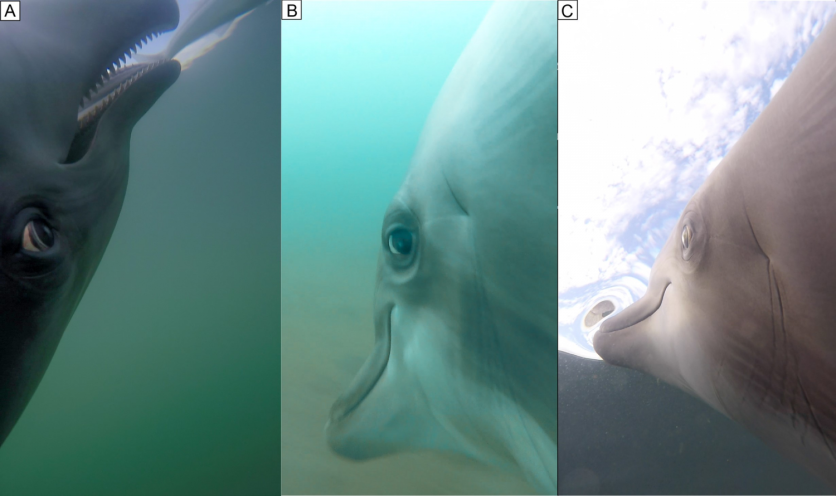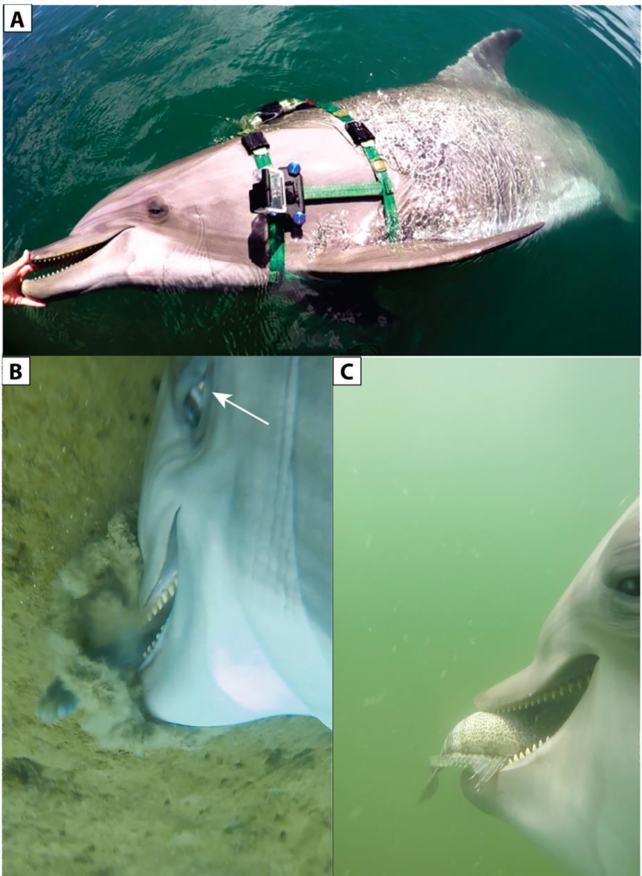The US Navy granted their dolphins' full reign to hunt in San Diego Bay after strapping cameras to their backs and training them to detect underwater explosives and safeguard some of the country's nuclear arsenal.
As a result, the very first footage from the perspective of dolphins hunting off the coast of North America is filled with cute dolphin squeals!
To the amazement of the researchers, the cunning marine animals delivered thrilling chases and even targeted poisonous sea snakes.

Mysterious Eating Habits of Dolphins
According to ScienceAlert, many fundamental aspects of dolphins are still unknown, most especially their regular eating habits.
The consensus among researchers is that there are at least two methods: sucking up prey similar to eating noodles from a bowl and chowing them down like a state fair hot dog in between rides.
But thanks to the video, more information about their eating habits have been revealed.

Six bottlenose dolphins (Tursiops truncatus) were equipped with cameras from the US National Marine Mammal Foundation (NMMF), which captured footage and audio over six months.
These recordings have given us fresh perspectives on the hunting techniques and social interactions of these sea mammals.
Their mouths and eyes were seen in startlingly off-angle positions when the recording equipment was positioned on their sides or backs.
Although these dolphins are not in the wild, they are regularly given a chance to hunt in the open ocean to supplement their typical frozen fish diet.
NMMF marine mammal veterinarian Sam Ridgway and colleagues said that when the dolphins hunted for food, they clicked continuously at intervals of 20 to 50ms.
"On approaching prey, click intervals shorten into a terminal buzz and then a squeal. On contact with fish, buzzing and squealing were almost constant until after the fish was swallowed," the team added.
More than 200 fish were captured by the dolphins with cameras affixed to them, including bass, croakers, halibut, smelt, and pipefish.
But more interestingly, the dolphins followed their prey's move and used a method previously seen in wild dolphins to swim upside down so their swiveling eyes could see clearly.
Consuming Reptiles
According to Ridgway and colleagues, the dolphins appeared to employ both sight and hearing to find prey. They also used vision and echolocation simultaneously to locate a fish.
The cameras also captured the sound of the animals' racing hearts as they struggled to keep up with the demanding activities. The footage showed that instead of ramming their prey, the dolphins used suction to gulp down their prey using their powerful throat muscles.
The dolphins' throat muscles can be seen in the footage springing into action, and their tongues retracted out of the way as they largely swallowed fish into the sides of their open mouths.
Their muscles for sucking add negative pressure that is produced by the increased inner mouth space, according to ScienceAlert.
Although dolphins have been observed playing with snakes in the past, including river dolphins messing with a large anaconda, the video provided evidence that dolphins may also consume these reptiles.
In the footage, one dolphin consumed Eight highly deadly yellow-bellied sea snakes (Hydrophis platurus).
Related Article : 'Deepest Shipwreck Discovery': Explorers Find WW2 Navy Destroyer Below the Pacific
This article is owned by Tech Times
Written by Joaquin Victor Tacla
ⓒ 2025 TECHTIMES.com All rights reserved. Do not reproduce without permission.




